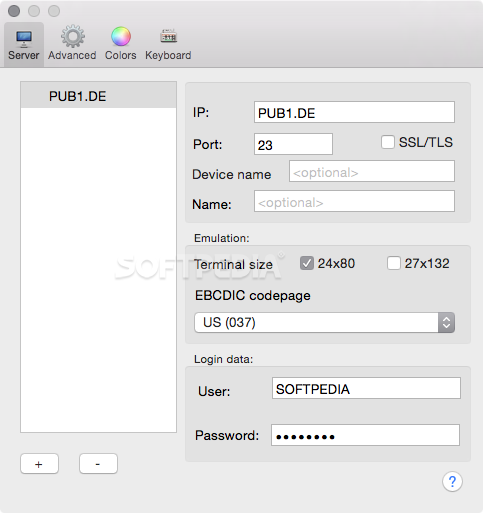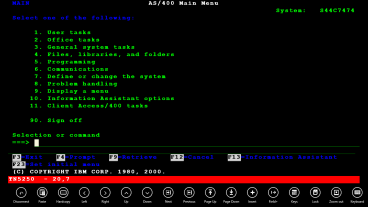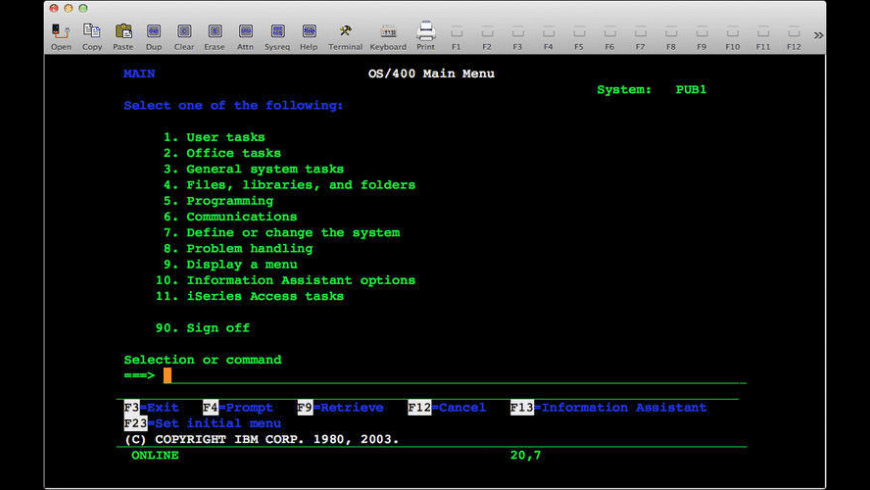
The name of the host application will be used as part of the request for an ID. Where custom-username is replaced by the name you want to use. You can override the default name with one of your own by modifying the /sessionserver/conf/container.properties file as follows: To configure a session based on user names, a default place holder user name is available: tidm-setup.įor the administrator to configure sessions using tidm-setup, the Terminal ID Manager needs to have IDs provisioned for tidm-setup.

The current user’s name, which must be found on an ID before it can be allocated, is the name of the user that the session is allocated to at runtime. Use this criterion to ensure that only IDs created for exclusive use by specific users will be allocated. The session type (for example, IBM 3270, IBM 5250, UTS, ALC or T27) is always included as part of any request for an ID. When selected, requires that the ID is configured to be used by this session exclusively. The port for the host configured for this session will be included as part of the request for an ID. The address of the host configured for this session will be included as part of the request for an ID. The IP address of the client machine will be included as part of the request for an ID. Include this attribute and enter the name of the pool to limit the ID search to a specified pool. All criteria must be met in order for an ID to be returned. If you decide to use Terminal ID Manager and have configured the Terminal ID Manager server, then you can select from the options below to configure the criteria for acquiring an ID. See Terminal ID Manager in the Management and Security Server Installation Guide. To use Terminal ID Manager, you must have a Terminal ID Manager server configured. An ID is connection data that is unique for an individual host session. You can use the Terminal ID Manager to manage pooled IDs for different host types. If you selected Terminal ID Manager you can use it to provide IDs to client applications at runtime. A device name that is set within a macro will override this setting. If you do not specify a device name for the session, the host dynamically assigns one to the session. When you select this option the end user will be prompted for the device ID each time a connection is attempted.

Use Terminal ID Manager which displays additional settings to complete. An unique device name will be automatically generated. When you connect using SSL/TLS, Host Access for the Cloud authenticates the server before opening a session, and all data passed between and the host is encrypted using the selected encryption level. SSL and TLS protocols allow a client and server to establish a secure, encrypted connection over a public network. In general, this negotiation will result in the use of the correct terminal ID, and so you should leave this box empty. When Host Access for the Cloud connects to a Telnet host, the Telnet protocol and the host negotiate a terminal ID to use during the initial Telnet connection. These options are explained in detail in the MSS Administrative Console > Host Access for the Cloud panel documentation, available from the Help button.

In configuring HA Cloud to use the Kerberos authentication protocol there are terms that you should understand and prerequisites to adhere to in advance of configuring this option. Kerberos automatic sign-on is configured in the MSS Administrative Console > Host Access for the Cloud. Use Kerberos automatic sign-on (5250 only) When set to Yes the user does not have to enter sign-on credentials. If you choose Custom Model, you can set the number of columns and rows to customize the terminal model. There are different terminal models available depending on the host type. Specify the terminal model (also known as a display station) you want Host Access for the Cloud to emulate.


 0 kommentar(er)
0 kommentar(er)
